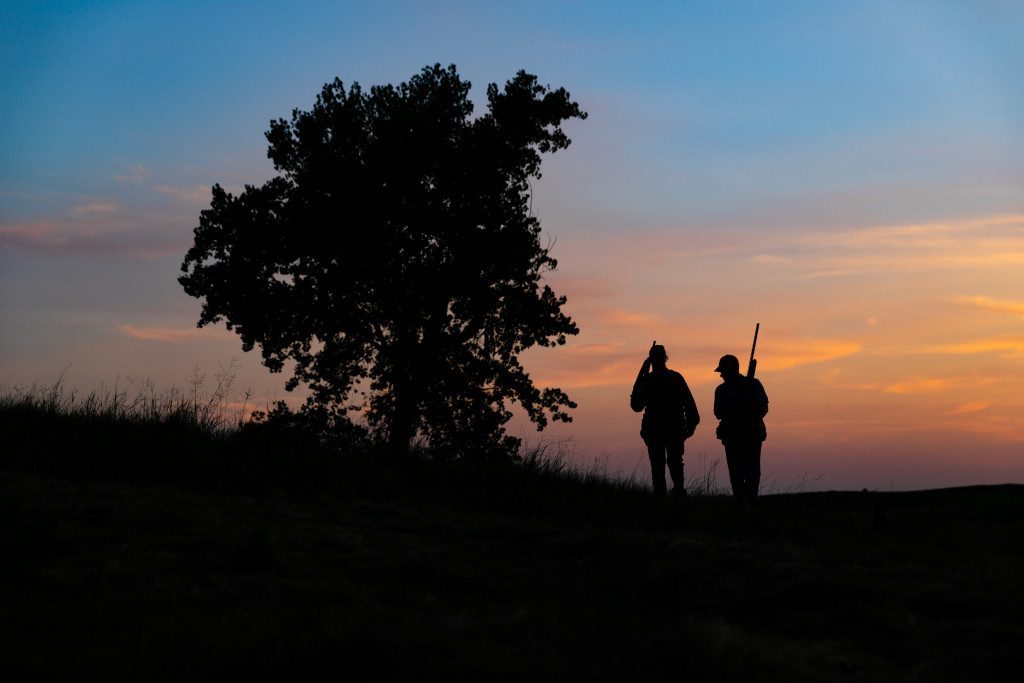
Story by Angie Kokes
Photos by Jenny Nguyen-Wheatley
Dove hunting offers generous bag limits and opportunities statewide. Although these birds can be hunted in almost every corner of the world, one of the most serene destinations to do so is in the Sandhills of Nebraska. If you can hear the melancholy tune of an old windmill creaking, you have found the ideal location to try your hand at bringing these tasty morsels out of the sky, while marveling in magnificent views of open grasslands to boot.
But before you go wandering at the sight of any windmill, remember to get permission first. Use plat maps to find more information about landowners in an unfamiliar area. And if you’re not shy, stop by the local coffee shop and say hello. You’ll likely meet a few faces there, and one might grant you access.
Where to Find Doves
Doves love water, and in this part of the state, windmills attract doves like moths are pulled to a flame at sunset. There’s nothing to stop a windmill from pumping too much water, and the overflow can create a “stream” or pond-size puddle that doves rely on as a water source in this dry, sandy landscape. Along with the windmill, also be on the lookout for the marijuana plant, which provides seeds these birds crave. Lastly, whether standing or downed, dead trees are choice areas of congregation for doves any time of day.
Water, food and shelter — if you can find one of these elements, you’ll likely find doves. However, locate all three in one place, and that’s what I call a honey hole, and where you will find me the first couple of weeks in September each year.

Gear
Although these honey holes don’t need a lot of help to bring in doves, I began using decoys when my dad started losing his eyesight. Decoys encourage birds to fly into specific areas, which helped my dad concentrate on those areas during shooting. The decoys worked so well that I never stopped using them, even when hunting alone. I recommend the Mojo Voodoo Dove and Dove Feeding Frenzy by Hunter’s Edge. Both are motion decoys and equally effective at luring doves into a location.
Dove hunting in the Sandhills is mostly stationary, so bring a compact hunting chair. Camouflage clothing isn’t necessary when dove hunting: Neutral colors will hide you just fine. Also, don’t forget about the weather. In early September, you never know what you’ll get in the Sandhills. The temperature could be 100 degrees, or it might fall into the low 50s. So, dress accordingly. Other essentials include a hunting vest, and if you don’t want to be eaten alive by mosquitoes, better bring a Thermacell and/or bug spray, too.
Seasoned hunters, including my husband, may be thinking, “That’s a lot of gear for a dove hunt, and how do you carry it all in and out?” A backpack is your best friend and will make your walk in and out, no matter how long or short, a piece of cake. Sometimes, a landowner might not want you driving across their property.

Gun and Ammo
When I started hunting doves as a young girl, I shot a Remington 870 Lightweight, which is a pump action shotgun. It’s a gun I still recommend to youth. As I grew older, I graduated to the Remington 11-87 12 gauge, a semi-auto shotgun that has undoubtedly seen thousands of rounds. However, a couple of broken neck vertebrae has made it hard for me to get down on my stock, and so I’ve now moved on to the Benelli M2 with an off-set stock, which makes it easier to bring the gun to my face.
In dove hunting, the most commonly used rounds are 2¾-inch shells in 7 or 8 shot lead for both 20 and 12 gauge. Speaking of spent shells, pick them up. It’s understandable you may not find them all, but try to do so, otherwise you might not be welcome back.
Shooting Doves
If you’re hunting over or under a dead tree, your shots are going to be easy. When coming in for a landing, doves will momentary pause in the air just before setting down. In this scenario, point the bead of your shotgun right on its head and pull the trigger — it’s that simple. Also, these birds are much easier to mark and retrieve.
Shooting a flying dove, however, can be one of the most difficult game birds to hit. Doves are small, and their vital area is even smaller. What’s more, they’re tough, acrobatic birds, capable of dodging and flying a long way even if you managed to clip a wing. Depending on if the dove is flying with or against the wind, and how fast the wind is blowing, etc., all will influence how far you need to lead the bird. Meaning, you are not aiming at the bird at all, but out in front of them. Many times, I’ve had to lead doves by several feet to make shots count.

Lastly, don’t forget to follow through with your shotgun swing. Fortunately, there’s no shortage of shooting opportunities when hunting in one of these honey holes, so bring plenty of shells.
With landowner permission and decoys in place, find a bit of cover, if you can, and be still. Then sit back and watch. The sound of a creaking windmill in the background is almost haunting, as these swift, gray ghosts materialize into view on the prairie’s horizon. Aim true, because these birds have a way of disappearing just as fast as they come.
Dove Season
• Season Dates: Sept. 1 – Oct. 30
• Shooting hours: 30 minutes before sunrise to sunset
• Daily bag/possession limits: 15/45 in aggregate among mourning dove, Eurasian collard-dove and white-winged dove.
• Licenses: Hunt Permit, Habitat Stamp and HIP (Harvest Information Program) Number
